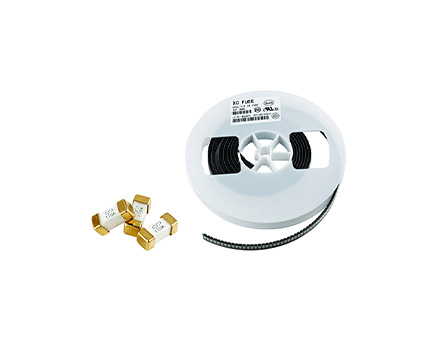
In electronic products, chip fuses have two functions: to protect users from harm and to protect circuits from damage. These functions benefit both device users and manufacturers. Over the past decade, the demand for electronic devices serving information technology, mobile, and consumer applications has sharply increased in the market. With this rapidly growing demand, the risk of unexpected situations in electronic devices has also increased, requiring the use of overcurrent protection devices such as chip fuses to avoid risks such as electrical overload.
Before analyzing the electrical characteristics of various chip fuses in the market, it is first necessary to understand the basic design principles behind each technology.
Standard fuses may be based on metal wires placed inside sealed ceramic or glass tubes filled with air or sand, but chip fuses are based on completely different principles. Most chip fuses appear to be standard chip devices and are made of single or multi-layer ceramic substrates. Some previous designs were based on epoxy glass fiber substrates similar to printed circuit boards (PCBs).
Fusing components on single-layer substrates or within multi-layer substrates are based on highly conductive materials such as copper, gold, or copper tin (Cu Sn) or silver palladium alloys. These composite materials can enhance the ability of fuses to withstand surge currents. But their response to thermal stress is often not very stable, which increases the possibility of incorrect fusing after experiencing multiple surge cycles.
To achieve the expected characteristics, depending on the type of substrate, the fusing element may be a thick film deposition by laser cutting or a chemically etched metal layer. It is also possible to use fused gold wire. Since the shape and thickness are determined, if the current reaches a certain level, the fusing element will fuse after a certain period of time under overload conditions.
In order to fulfill its function as a functional layer of chip components, the fuse element must be unaffected by environmental conditions. For single-layer chip fuses, the fusing components are usually coated with epoxy resin. The fusing element of a multi-layer chip fuse is naturally protected by each substrate layer. Due to the fact that chip fuses can operate at a rated operating current of up to 7-8A, they require surface mounted device (SMD) connections to have low impedance characteristics.
Read recommendations:
pptc fuse full form.What are the characteristics of direct plug-in fuse thermistors
air conditioner fuse box replacement.PTC1812 self recovery fuse